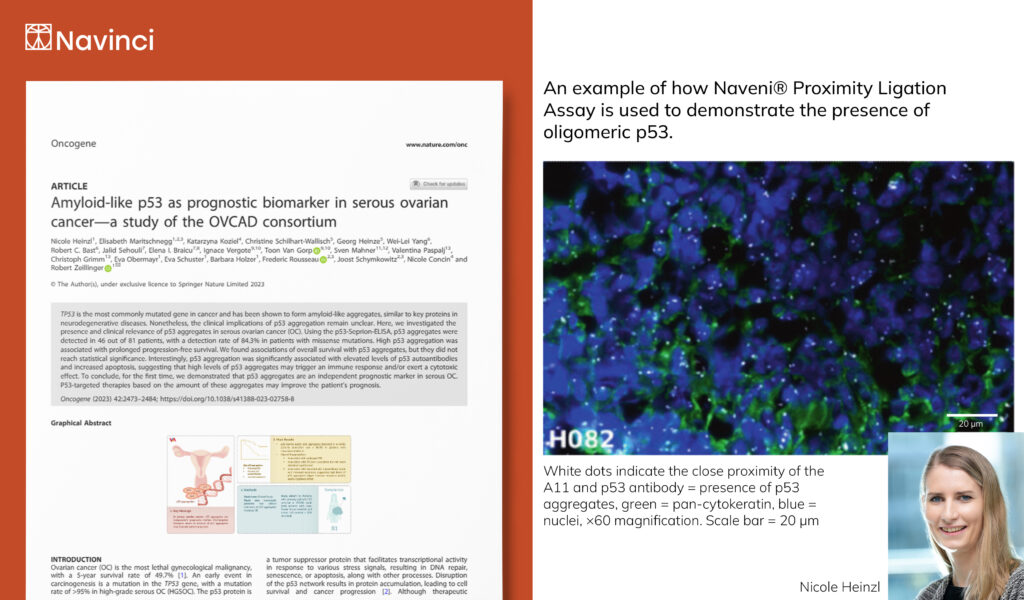New Research Unveils p53 Aggregates’ Vital Role in Ovarian Cancer Prognosis and Treatment Strategies
Nicole Heinzl at the Medical University of Vienna, Vienna, Austria has, together with co-authors, recently published a study in Oncogene. The authors used our NaveniFlex™ assay for the studies, and we are very proud that our research tools proved to be of great importance in ovarian cancer research.
Heinzl et al. investigated the role of protein aggregation, particularly focusing on the aggregation of the p53 protein, in ovarian cancer (OC). The researchers found that p53 aggregates can serve as an independent prognostic marker in OC.
Notably, OC samples with missense mutations in the TP53 gene exhibited significantly more p53 aggregates compared to tumors with wild-type TP53, deletions, or nonsense mutations. Interestingly, both structural and contact mutations in TP53 were associated with p53 aggregation. However, the level of p53 aggregation varied among tumors with the same mutation, suggesting that cofactors play a role in the formation of p53 aggregates.
The study also evaluated patient outcomes based on the level of p53 aggregation and found that high levels of p53 aggregation were associated with prolonged progression-free survival (PFS) and, to some extent, overall survival (OS). High p53 aggregation was also linked to increased p53 autoantibody titers and elevated apoptosis markers, which may explain the improved outcomes in these patients. The research underscores the importance of quantitatively measuring p53 aggregates and suggests that this approach could aid in therapeutic decision-making. Furthermore, the study highlights the potential for targeting p53 aggregates as a novel strategy in cancer therapeutics, potentially offering new avenues for treatment. The use of techniques like NaveniFlex™ based on the Naveni® Proximity Ligation Assay for assessing p53 aggregation in clinical settings could be valuable for patient stratification and personalized treatment approaches.
This is a quote from the publication:
“The PLA, performed to verify the ELISA results, is an additional promising diagnostic tool as it allows the analysis of FFPE tissue sections and makes p53 aggregation assessment clinically applicable.”
This is how Nicole Heinzl describes why they use NaveniFlex for the studies of p53 aggregates:
Over the past years, we have extensively employed the proximity ligation assay (PLA); however, we encountered sensitivity issues, particularly when working with tissue sections. Our recent adoption of Navinci’s cutting-edge technology has led to a remarkable increase in the amount of signals, along with the successful elimination of non-specific background noise. This has enabled us to apply the PLA for the reliable detection of p53 aggregates in patient tissues for the first time. We are confident that this innovative technology will pave the way for broader application of p53 aggregation diagnostics in the future.

